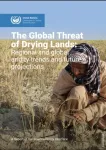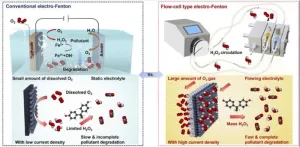(Press-News.org) Metabolic dysfunction-associated steatotic liver disease (MASLD), formerly referred to as nonalcoholic fatty liver disease (NAFLD), impacts roughly 30% of the global adult population. The disease spans from benign fat accumulation in the liver (steatosis) to its more severe form, metabolic dysfunction-associated steatohepatitis (MASH, formerly nonalcoholic steatohepatitis or NASH). MASH represents a dangerous progression, with the potential to cause cirrhosis, liver cancer, type 2 diabetes, and cardiovascular disease.
Despite its prevalence, MASH remains highly heterogeneous. Not all individuals follow the same clinical trajectory, and conventional treatment approaches often fail to account for these differences. Recognizing this gap, a groundbreaking study led by Prof. François Pattou and Prof. Stefano Romeo has redefined MASH by identifying two distinct subtypes with distinct risks and outcomes.
This transformative research, conducted at Lille University Hospital as part of the RHU PreciNASH project coordinated by Inserm, was made possible through collaboration with leading scientific teams from Inria, CNRS, the University of Lille, Lille University Hospital, and the Pasteur Institute of Lille, alongside international partners from Sweden, Italy, Belgium, and Finland. Published in Nature Medicine, the study marks a pivotal shift in the understanding and treatment of MASH.
Two Subtypes of MASH, Two Distinct Risk Profiles
The study identified and validated two distinct types of MASH based on histology and liver imaging, using data from European cohorts and the UK Biobank:
Liver-Specific MASH: A genetically driven subtype with rapid progression of liver disease but a surprisingly low risk of cardiovascular complications.
Cardiometabolic MASH: A high-risk profile linked to type 2 diabetes and cardiovascular diseases, alongside comparable liver disease progression.
What makes this discovery groundbreaking is that both subtypes exhibit similar histological features under the microscope or on imaging, making them indistinguishable using traditional diagnostic methods. However, their markedly different clinical outcomes underscore the critical need for advanced diagnostic tools and personalized interventions.
Transforming Diagnosis and Treatment
This study empowers clinicians to move beyond one-size-fits-all approaches to treating MASH. By leveraging simple clinical markers—age, BMI, HbA1c, LDL cholesterol, triglycerides, and ALT—patients can be stratified into specific subtypes, enabling tailored treatments:
Liver-Specific MASH: Focus on therapies to halt liver damage and prevent progression to cirrhosis or liver cancer.
Cardiometabolic MASH: Emphasize aggressive management of metabolic and cardiovascular risks alongside liver disease treatment.
“This research marks a turning point,” says Prof. François Pattou. “We now have a clear path to develop subtype-specific treatments that can improve patient outcomes.”
Why This Discovery Matters
MASH is the most severe manifestation of MASLD, with the potential for devastating health consequences. However, its heterogeneity has often been overlooked, leading to inconsistent treatment outcomes.
“This manuscript offers a transformative perspective on MASH and its heterogeneous outcomes,” notes an anonymous reviewer. “Thoughtfully conducted on large, well-characterized cohorts, it opens new doors for precision medicine in this field.”
The Science Behind the Subtypes
The study utilized data from the French ABOS cohort of 1,389 individuals with obesity and validated its findings across three European MASLD cohorts (Italy, Belgium, and Finland), comprising 1,099 participants, as well as imaging data (MRI) from over 6,000 UK Biobank participants. By integrating clinical traits with liver transcriptomics and plasma metabolomics, researchers uncovered distinct biological pathways driving each subtype.
“This discovery sheds light on why current treatments often yield inconsistent results,” explains co-lead researcher Prof. Stefano Romeo. “It was a true ‘eureka’ moment for our team.”
A New Era for MASH Treatment
This breakthrough highlights the urgent need for subtype-specific care, paving the way for innovative treatments and personalized medicine. Future research will explore how these subtypes respond to lifestyle interventions, pharmacological therapies, and other treatments in diverse populations.
“We’ve always known MASH was heterogeneous,” concludes Prof. Romeo. “Now, we finally have a roadmap to turn these insights into real-world solutions for patients.”
END
MASH discovery redefines subtypes with distinct risks: shaping the future of fatty liver disease treatment
2024-12-09
ELSE PRESS RELEASES FROM THIS DATE:
Three-quarters of Earth’s land became permanently drier in last three decades: UN
2024-12-09
Even as dramatic water-related disasters such as floods and storms intensified in some parts of the world, more than three-quarters of Earth’s land became permanently drier in recent decades, UN scientists warned today in a stark new analysis.
Some 77.6% of Earth’s land experienced drier conditions during the three decades leading up to 2020 compared to the previous 30-year period, according to the landmark report from the UN Convention to Combat Desertification (UNCCD).
Over the same period, drylands expanded by about 4.3 million km2 – an area nearly a third larger than India, the world’s ...
Lower-quality public housing is at high risk of flood damage
2024-12-09
AUSTIN, TX, Dec 09, 2024 – Hurricane Helene highlighted the increasing intensity of extreme weather events and the catastrophic flooding they can bring. A new study finds that many Americans residing in lower-quality public housing face a high risk of experiencing flood-related damages as their homes are disproportionately located in areas of high flood risk.
A study by scientists from the Ohio State University and Texas A&M University has combined HUD’s physical inspection scores of public housing units across the country (from 2013-2020) with ...
Study compares soft tissue sarcoma rates among U.S. military servicemen and men in the general population
2024-12-09
A recent analysis reveals that the incidence rates of soft tissue sarcomas—cancers in muscle, fat, blood vessels, nerves, and tendons—are lower in young U.S. active-duty military servicemen compared with those in the general population, but higher in middle-aged servicemen, perhaps due to greater cumulative exposure to toxins. The findings are published by Wiley online in CANCER, a peer-reviewed journal of the American Cancer Society.
Soft tissue sarcomas are rare cancers arising all over the body, in various organs and tissues such as muscle, fat, and viscera. Most sarcomas arise sporadically, but a small subset arise from exposure to ...
Toxic air in Texas high schools
2024-12-09
AUSTIN, TX, Dec 9, 2024 – Semivolatile organic compounds (SVOCs) are found in building materials and consumer products like carpeting, furniture and electronics. Gases released by these chemicals in homes, offices and schools pose potential human health risks such as cancers, reproductive disorders, and nervous system damage.
A recent study of the indoor air in central Texas high schools revealed that two groups of SVOCs, phthalates and PBDEs, are prevalent in high school environments. The ...
What motivates Americans to eat less red meat?
2024-12-09
AUSTIN, TX, Dec 9, 2024 – Limiting red meat consumption is key to a sustainable and healthy diet, yet Americans are among the world’s largest consumers of red meat. A new study reveals the demographics of American adults who choose not to eat red meat and finds that environmental concerns may matter more to them than health risks.
Researchers at Baruch College and the University of Southern California (USC) surveyed more than 7,500 adults as part of the Understanding America Study – a probability-based Internet panel of individuals 18 and older. They will present ...
Sugary drinks significantly raise cardiovascular disease risk, but occasional sweet treats don’t, scientists find
2024-12-09
A little of what you fancy does you good… unless it’s a fizzy drink. Scientists studying the impact of sugar on the risk of cardiovascular disease have found that eating too much added sugar increases your risk of stroke or aneurysm, but eating a few treats is associated with a lower risk of cardiovascular diseases. Meanwhile, drinking sweetened beverages raises your risk of stroke, heart failure, and atrial fibrillation.
“The most striking finding from our study is the divergent relationship between different sources of added sugar and cardiovascular ...
Falsifying anthropics
2024-12-09
In short:
“We exist, therefore the universe is made to host us”: the anthropic principle has sparked intense debate in cosmology since its first formulation. A new paper published in JCAP proposes a way to test it. To falsify it, all three of the following conditions must be confirmed by observations:
• Cosmic inflation occurred
• Axions exist
• Dark matter is not made of axions
If all these conditions are proven true, the anthropic principle would lose its validity, and our universe would appear ...
New West Health-Gallup poll reveals most Americans worried about often hidden healthcare fees
2024-12-09
WASHINGTON, DC – Monday, December 9, 2024 – More than half of Americans (52%) worry about affording the cost of often hidden healthcare fees, increasingly pervasive charges that could add hundreds or even thousands of dollars to their medical bills a new West Health-Gallup poll finds.
Hospitals typically add these fees on top of charges for routine medical services like lab tests or physical examinations provided at outpatient centers, clinics, and medical offices that they own. This means patients end up paying more for the same medical service than they would at independent providers or freestanding clinics – and some may not even ...
Developing wastewater treatment units that treat right where it's generated
2024-12-09
Conventional wastewater treatment involves the centralized collection of wastewater from sources through pipes to large-scale treatment plants, where it is treated in bulk. However, this is not feasible in small, decentralized areas such as rural areas. Simple treatment units installed at small non-point sources of pollution mainly focus on disinfection and turbidity improvement, and do not properly decompose the recalcitrant organic matter in wastewater. In addition, even if industrial wastewater is treated in-house, the treatment efficiency is low, and highly ...
Children’s Hospital of Philadelphia researchers find rotavirus vaccine is safe for use in NICU babies
2024-12-09
Philadelphia, December 9, 2024 – Researchers from Children’s Hospital of Philadelphia (CHOP) found that transmission of rotavirus vaccine strains in a neonatal intensive care unit (NICU) is rare and without clinical consequences, strongly suggesting that giving the rotavirus vaccine to eligible infants during their hospitalization provides immune benefits that outweigh any risks. The findings, published today in the journal Pediatrics, could serve as the basis for a change in clinical practice.
Rotavirus is a virus that infects the lining of the intestines and is typically ...


